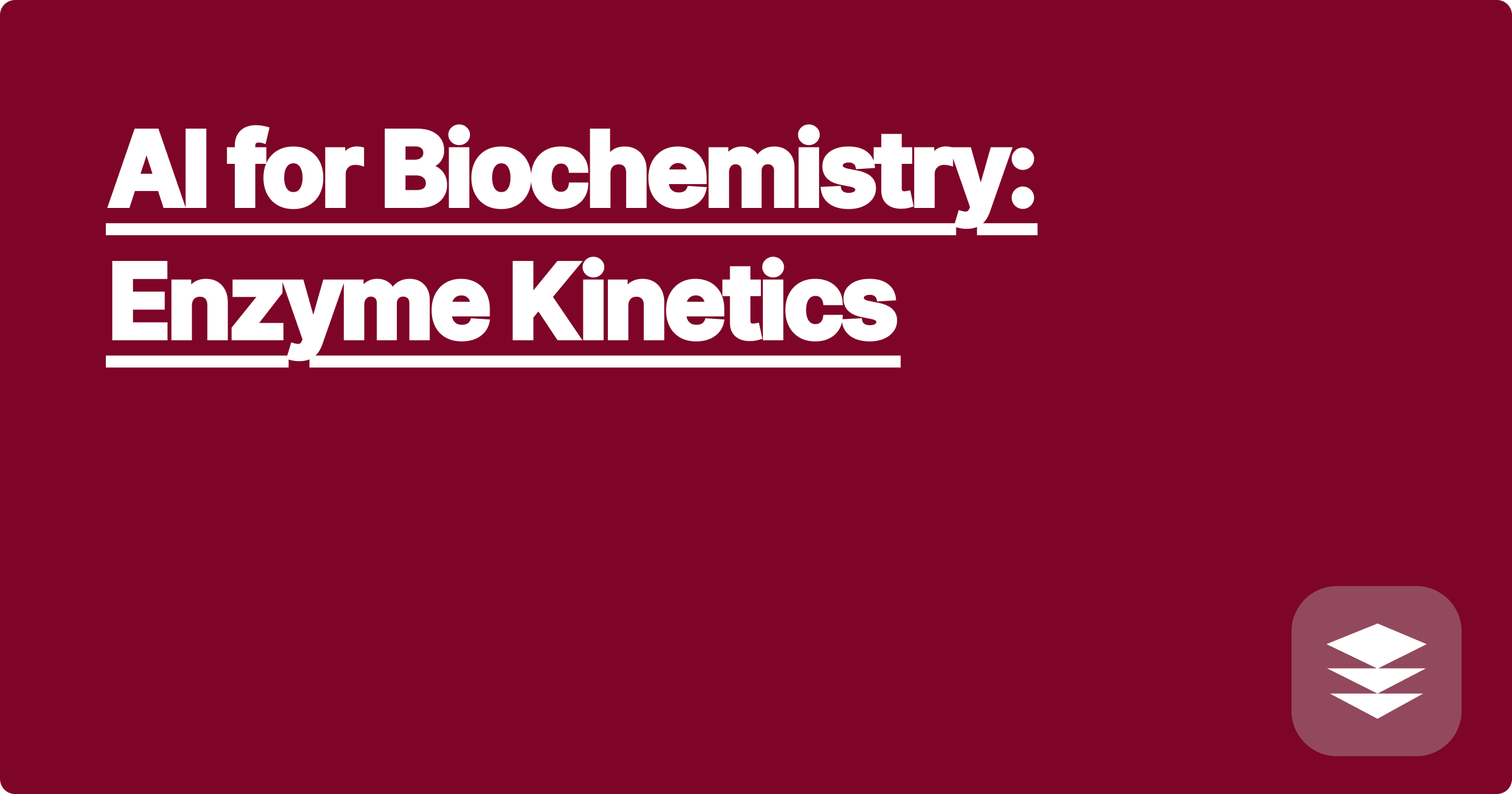
The world of biochemistry, particularly enzyme kinetics, can feel like navigating a complex maze. Understanding how enzymes catalyze reactions, determining Michaelis-Menten constants, and interpreting Lineweaver-Burk plots can be daunting. Traditional learning methods often fall short, leaving students struggling to grasp these intricate concepts. But what if there was a way to personalize your learning journey and unlock the secrets of enzyme kinetics with the help of artificial intelligence? Imagine having a virtual AI partner guiding you through complex equations, providing tailored explanations, and even helping you analyze experimental data. This isn't science fiction; it's the reality of AI-powered learning in STEM.
This blog post explores how AI can revolutionize your approach to biochemistry, specifically enzyme kinetics. We'll delve into practical strategies for leveraging both well-known and lesser-known AI tools to boost your understanding, improve your academic performance, and even accelerate your research. Whether you're a first-year undergraduate grappling with introductory concepts or a seasoned graduate student conducting advanced research, incorporating AI into your workflow can significantly enhance your efficiency and deepen your comprehension. This is about empowering you to take control of your learning and research, transforming challenges into opportunities for growth.
Enzyme kinetics, the study of enzyme-catalyzed reaction rates, is a cornerstone of biochemistry. It provides crucial insights into how enzymes function, their regulation, and their role in biological processes. However, mastering enzyme kinetics requires a strong foundation in mathematical modeling, data interpretation, and experimental design. Many students struggle with the abstract nature of the concepts, the complexity of the equations involved (like the Michaelis-Menten equation), and the often-tedious process of analyzing experimental data. Traditional learning resources, such as textbooks and lectures, may not always provide the personalized support and interactive learning experiences needed to overcome these challenges. This is where AI steps in, offering a new paradigm for learning and research in enzyme kinetics.
Artificial intelligence can be a game-changer in tackling the complexities of enzyme kinetics. Tools like ChatGPT, Wolfram Alpha, and lesser-known specialized AI platforms can provide personalized support, automate tedious tasks, and offer new avenues for exploration. For example, you can use ChatGPT to break down complex concepts into simpler, more digestible explanations. Ask it to explain the significance of the Michaelis-Menten constant (Km) or the meaning of Vmax in different contexts. Wolfram Alpha can be invaluable for solving complex equations related to enzyme kinetics, such as determining initial reaction rates or calculating enzyme activity. Beyond these popular tools, exploring niche AI platforms designed for scientific data analysis, like BioSolver or EnzymeX (hypothetical examples), can unlock even more powerful capabilities, such as predicting enzyme activity under different conditions or simulating enzyme-substrate interactions.
Start by identifying your specific learning or research needs. Are you struggling with understanding the theoretical concepts, analyzing experimental data, or designing experiments? Once you've pinpointed your needs, select the appropriate AI tools. For conceptual understanding, engage with ChatGPT or Claude by asking targeted questions about specific topics. For example, ask "Explain the difference between competitive and non-competitive inhibition." For data analysis, use Wolfram Alpha to plot data, calculate Km and Vmax values, or perform regression analysis. If you're working with large datasets or complex experimental designs, consider specialized AI platforms like BioSolver or EnzymeX. These tools can automate data processing, identify trends, and even predict enzyme behavior.
Imagine you're trying to determine the Km and Vmax of an enzyme from experimental data. You can input your substrate concentration and initial velocity data into Wolfram Alpha, and it will automatically generate a Lineweaver-Burk plot and calculate the corresponding kinetic parameters. Alternatively, if you're struggling to understand the mechanism of allosteric regulation, you can use ChatGPT to provide a step-by-step explanation, complete with analogies and examples. For more advanced applications, a specialized AI tool like BioSolver could analyze large datasets from high-throughput screening experiments, identifying potential enzyme inhibitors and predicting their binding affinities. These are just a few examples of how AI can be seamlessly integrated into your workflow to enhance your understanding and accelerate your research.
To maximize the benefits of AI in your studies, consider incorporating a Generalized Personal AI (GPAI) into your workflow. A GPAI can act as your virtual research assistant, helping you manage your time, organize your literature, and even brainstorm research ideas. For example, you can use your GPAI to schedule study sessions, set reminders for deadlines, and curate relevant research articles. It can also help you analyze your learning progress, identifying areas where you need to focus more attention. Combine this with the power of other AI tools, and you'll have a personalized learning ecosystem at your fingertips. By strategically integrating AI into your study habits, you can significantly improve your understanding of complex topics, boost your academic performance, and free up valuable time for other pursuits. Remember, AI is a tool, and its effectiveness depends on how you use it. Be proactive, experiment with different tools and approaches, and find what works best for you.
In conclusion, AI is transforming the landscape of STEM education and research, offering unprecedented opportunities for personalized learning and accelerated discovery. By embracing these powerful tools and integrating them strategically into your workflow, you can unlock your full potential in biochemistry and beyond. Don't be afraid to experiment, explore, and discover the incredible possibilities that AI has to offer. Start small, focus on your specific needs, and gradually incorporate AI into your daily routine. The future of learning is here, and it's powered by AI. Take the first step today and embark on a journey of enhanced understanding and accelerated achievement.
AI for Differential Equations: Solve Problems
AI for Earth Science: Explore Data
AI for Aerospace Eng: Flight Sim
AI for Physics Labs: Data Analysis
AI for Genetics: Understand DNA
AI for Electrical Eng: Circuit Design
AI for Biochemistry: Enzyme Kinetics
AI for Math: Conquer Complex Problems